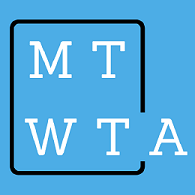In my coursework toward a M.Ed. in digital learning, I’ve been involved in a lot of reading, online discussion, and general thinking on ePortfolios. Recently I think that a couple of things have crystallized for me.
Dwayne Harapnuik calls an ePortfolio “a learner’s digital evidence of meaningful connections” (Harapnuik, n.d.). In the same blog post, Harapnuik cites a definition from Sutherland and Powell (2007), defining the ePortfolio as “a purposeful aggregation of digital items – ideas, evidence, reflections, feedback etc, which ‘presents’ a selected audience with evidence of a person’s learning and/or ability.” I think these are excellent definitions of the ePortfolio concept, but one thing they don’t specifically address is who that audience is. And for me, the most helpful thing has been to realize that I am that audience.
A good friend/bandmate/songwriting partner of mine told me once to “write the song you want to hear.” The idea being, if you write a song that you like and that speaks to something in you, others will feel the same. This idea sticks with me when it comes to ePortfolios–if I make my portfolio a true conversation with myself about what I have done and what I have learned, and if that conversation helps me understand what I’ve accomplished (or failed to accomplish), then others–my instructors, my colleagues, my classmates, the random Joe Shmoe on the street–will likely garner some of the same understanding. In an oft-quoted (and oft-misquoted*) line, Gertrude Stein, in The Making of Americans, “I am writing for myself and strangers” (Stein, 1995, p.289). Mostly myself. Everyone else is just invited along for the ride.
I think this is the best way to demonstrate learning, honestly. If I can truly show myself what I’ve learned (or if my students can show themselves), it can’t help but be authentic to anyone else who sees it.
*This isn’t really relevant to the topic above, but I can’t help myself–this is the kind of nerd I am. Regarding the Stein quote above: innumerable inspirational websites, posters, bookmarks, etc. quote Stein as writing, “I write for myself and strangers. The strangers, dear Readers, are an afterthought.” This second sentence does not appear in the original source material. It does, however, appear, in an essay by Alfred Kazin entitled “The Self as History: Reflections on Autobiography” (1979)–he quotes Stein’s original sentence and then responds with the second sentence that is now commonly attributed to Stein. There. That’s a thing you know now.
REFERENCES
Harapnuik, D. (n.d). What is an eportfolio. Retrieved from http://www.harapnuik.org/?page_id=5977
Sutherland, S. and Powell, A. (2007). CETIS SIG mailing list discussions. Retrieved from https://www.jiscmail.ac.uk/cgi-bin/webadmin?A1=ind0707&L=CETIS-PORTFOLIO#3
Stein, G. (1995). The making of Americans: Being a history of a family’s progress. Normal, IL. Dalkey Archive Press.
Kazin, A (1979). The self as history: Reflections on autobiography. In M. Pachter (Ed.), Telling lives: The biographer’s art. Philadelphia, PA: University of Pennsylvania Press.


